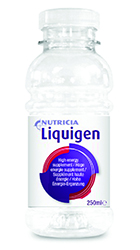 If you are new to the ketogenic diet, you may be wondering about the term “MCT” you keep hearing about. MCT stands for medium chain triglyceride. Some of you may already be using MCTs, but perhaps you are wondering what makes them different from regular fats and oils. In today’s post, we’ll teach you all about MCTs, what makes them unique, and how they are sometimes used with the ketogenic diet for epilepsy.
If you are new to the ketogenic diet, you may be wondering about the term “MCT” you keep hearing about. MCT stands for medium chain triglyceride. Some of you may already be using MCTs, but perhaps you are wondering what makes them different from regular fats and oils. In today’s post, we’ll teach you all about MCTs, what makes them unique, and how they are sometimes used with the ketogenic diet for epilepsy.
Dietary Fat
To understand MCTs, it helps to know a little about dietary fat in general. Dietary fat is made up of fatty acids, often referred to as the “building blocks” of fat. Fatty acids can classified as short, medium, or long-chain, depending on their length.
Most of the fat in the foods we eat is in the form of triglycerides, which are made up of 3 fatty acids. A triglyceride can be classified as short, medium, or long-chain depending on the length of the fatty acids that it contains. A long chain triglyceride (LCT) contains 3 long chain fatty acids, a medium chain triglyceride (MCT) contains 3 medium chain fatty acids and a short chain triglyceride (SCT) contains 3 short chain fatty acids.
How the Body Processes MCTs
Now that you understand the structure of dietary fat, let’s move on to the differences in how the body processes MCTs in comparison to LCTs.
- Digestion & Absorption: Because of their shorter length, MCTs are more easily digested and absorbed in the gastrointestinal tract than LCTs.
- Transportation: Once dietary fat is absorbed by the gastrointestinal tract, the body must then transport it to the liver where it is metabolized to produce energy. MCTs are transported directly from the gastrointestinal tract through the bloodstream to the liver. In comparison, LCTs must take a longer route through the lymphatic system then through the circulatory system before finally reaching the the liver. The analogy I like to use is that LCTs and MCTs have the same origin (GI tract) and destination (liver) but LCTs take the longer, slower scenic route and MCTs take the expressway.
- Metabolism: In addition to the differences described above, the metabolism of MCTs is unique as well. Fat metabolism occurs in the mitochondria of the liver. LCTs require a substance called carnitine to enter the mitochondria, however MCTs can enter mitochondria freely so they are not limited by the presence of carnitine.
How Is MCT Used with the Ketogenic Diet?
Remember that the ketogenic diet works by switching the body’s metabolism from using glucose for energy to using fat for energy, which produces high amounts of ketones in the body. The unique features of MCTs make it useful with the ketogenic diet because MCTs are capable of producing more ketones than regular fat (which is mostly LCT). Although a small number of foods contain a percentage of MCTs (such as coconut oil, palm kernel oil, and butter fat), pure MCT oil is not found naturally. However, there are specially-produced MCT oils available, such as Liquigen®.
The MCT Ketogenic Diet (MCTKD) was first introduced in the 1970s. This diet is a variation of the Classical Ketogenic Diet and is based on the percentage of calories coming from MCTs (usually between 30-60%), rather than a ketogenic ratio. The idea is that because MCTs produce more ketones than regular fat (which consists of mostly LCTs), incorporating high amounts of MCTs into the diet allows patients to stay in ketosis while consuming relatively higher amounts of protein and carbohydrates. This makes the MCTKD appealing to individuals who might have trouble complying with the protein and carbohydrate restrictions of the Classical Ketogenic Diet.
High amounts of MCTs can cause gastrointestinal disturbances in some individuals, such as vomiting or diarrhea, so the amount of MCTs that can be used depends on each patient’s tolerance. When used, the ketogenic dietitian will usually recommend introducing MCT oil gradually to help ensure tolerance. Like the Classical Ketogenic Diet, the MCTKD is initiated in the hospital under medical supervision and all foods must be weighed using a gram scale.
The MCTKD is frequently used in Europe and Canada. Although the MCTKD is less common in the U.S., MCT oil is often incorporated into the Classical Ketogenic Diet and Modified Atkins Diet. MCT oil may be added to the diet to help boost ketone production or to help maintain ketosis with a lower ketogenic ratio with more protein and carbohydrates allowed.
As always, consult with your health care provider before introducing MCT oil or any other new item into your child’s ketogenic diet.
Do you use MCTs? If so, how do you use them?[polldaddy poll=8404179]
-Mallory
Photo attribution: Flickr user Mattie Hagedorn


 Follow
Follow
One thought on “Medium Chain Triglcyerides (MCTs) and the Ketogenic Diet”